Contents
- Composition and calorie content of apricot
- The benefits of apricot fruit
- The benefits of apricot bark
- Benefits of apricot juice
- Recipes for health
- apricot kernels
- Apricot masks
- Apricot oil in cosmetology
- Contraindications to the use and harm of apricot
- How to choose and store an apricot?
- Apricot Salad Recipes
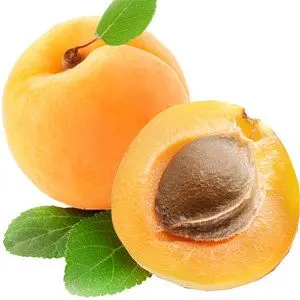
Apricot is the name not only of the plum tree itself, but also of the fruits it produces. It was not possible to establish where the apricot comes from with 100% accuracy. Both the Tien Shan and Armenia simultaneously claim to be called its homeland. At this point in time, the tree successfully grows in countries where there are suitable climatic conditions for this. Apricot prefers a temperate warm climate.
The lifespan of a tree is long and can reach 100 years. It takes its roots deep, although it does not itself reach large sizes. Apricot is not afraid of frost, it is able to tolerate temperatures down to -30 ° C.
Edible is the apricot fruit of the same name, which has a yellow or orange pulp located around the stone. The barrel of an apricot may be pink. Apricots can be eaten both fresh and dried. A person uses the fruit bone as food, which must first be prepared. Milk and butter are also extracted from it.
Composition and calorie content of apricot
The orange color of the apricot is due to its beta-carotene content. It is believed that the champion in the content of this useful provitamin is carrots, but there is also a lot of it in the fruits of apricot trees.
Calories 44 KKal
- Fats:
0,1 g
- Proteins:
0,9 g
- Carbohydrates:
11,12 g
- Water:
86,2 g
- Ash:
0,7 g
- Cellulose:
2,0 g
Vitamins (in 100 g): | Quantity | %RDN |
Beta-carotene | 1094-1600 μg | 32% |
Vitamin A (retinol) | 96 mcg | 12% |
Vitamin C (ascorbic acid) | 10 mg | 11% |
Vitamin E (alpha tocopherol) | 1,1 mg | 7% |
Minerals (in 100 g): | Quantity | %RDN |
Bor | 125 mcg | 179% |
Vanadium | 25 mcg | 63% |
* Strontium | 350-560 μg | 52% |
Magnesium | 57-104 mg | 20% |
Cobalt | 2 mcg | 20% |
Silicon | 5 mg | 17% |
Copper | 140 mcg | 14% |
potassium | 305 mg | 12% |
Manganese | 220 mcg | 11% |
Molybdenum | 8 mcg | 11% |
Full chemical composition ➤
Other important connections:
Phytosterols — 18 mg (6% of RDI)
Purine — 8 mg (6,7% of RDI)
Oxalic acid — 10 mg (2,5% of RDI)
The calorie content of apricots is low, only 100 kcal per 44 g. However, the fruits should be used with caution by people with diabetes, as they contain quite a lot of sugars (5,87% sucrose and 2,37% glucose).
But the Armenian varieties of apricot, due to the high content of iodine, can be used as a prophylactic for thyroid diseases.
The benefits of apricot fruit
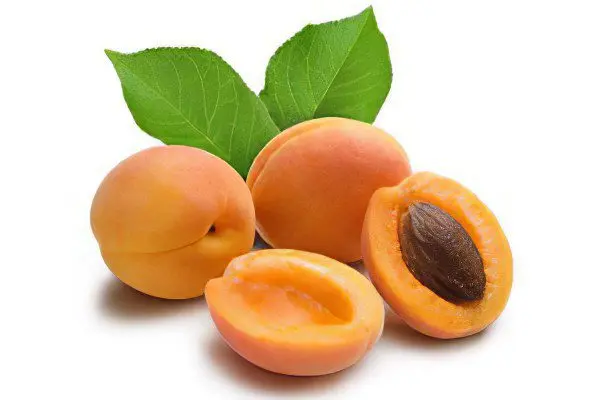
The benefits of apricot are quite diverse, among the useful properties are:
Stimulation of the gastrointestinal tract;
Stimulation of the hematopoietic function, which is necessary for people suffering from anemia;
Increasing the endurance and stress resistance of the body;
Mucolytic effect, which is especially noticeable in diseases of the respiratory system, accompanied by a dry cough;
Help with constipation;
Help with diseases of the cardiovascular system;
Normalization of body temperature;
Normalization of the functioning of the liver, stomach, gallbladder, kidneys;
Quenching thirst;
Normalization of the acidic environment of the stomach;
Help the body to cleanse toxins;
Providing an antioxidant effect (for this purpose, it is enough to eat no more than 7 fresh or 10 dried fruits);
Improving memory and brain function in general.
The beneficial properties of apricots have been known since ancient times. Ancient Chinese and Arab healers, among which the famous healer Ibn Sina, claimed that the fruits are especially useful for women. They help to get rid of extra pounds, strengthen hair and nails, give beauty and radiance to the skin. In addition, ancient healers prepared decoctions and ointments from apricots, which they used to get rid of fetid sweat, abdominal pain, and also to treat respiratory diseases.
Fruits have a pleasant taste and aroma, contribute to quickly coming saturation. But this does not mean that only sweet apricots have such an impressive list of useful properties. Even wild fruits with sourness and bitterness possess them.
A decoction based on apricot leaves (both cultivated and wild trees) can help the body in removing toxins and poisons. It is consumed on an empty stomach, before the first meal in a volume of 200 ml. Such a drink will be useful for people working in hazardous industries: in printing houses, in textile factories, wherever you have to deal with toxic chemical components.
The benefits of apricot bark
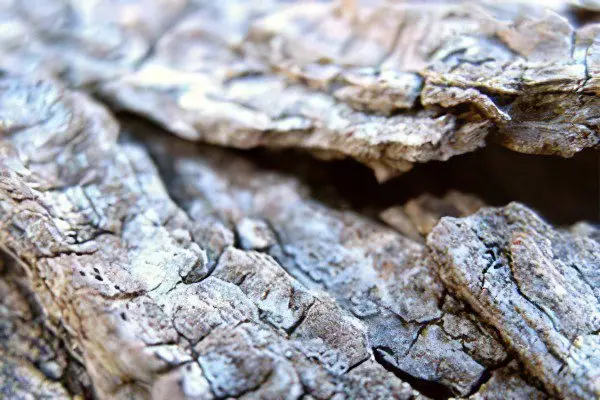
The benefits of apricot bark are not as varied as the positive effects of ingestion of the fruits of this tree, but their significance is no less. Scientists have determined that it contains substances that have a beneficial effect on the functioning of the heart and central nervous system. Their action can be compared with the effect of taking Piracetam. This fact determines the recommendations for taking a decoction of the bark after strokes, as well as for other circulatory disorders in the brain of a chronic course.
In addition, a decoction of the bark is useful for women who have gone through a difficult process of childbirth, as it allows you to quickly restore lost strength.
The resin that can be found on the tree bark of apricots has the properties of gum arabic (axacia resin, known as food additive E 414). It knits well and envelops, and also has a healing effect.
Benefits of apricot juice
Juice is processed and absorbed by the body faster than the pulp of the fetus, so since ancient times it has been used for nursing seriously ill patients. It is useful in childhood, it should be consumed by pregnant women as a source of calcium and iron.
Enough 0,15 liters of juice to fill the daily need of the body in beta-carotene. If you drink 0,1 liters of apricot juice eight times a day, you can get rid of excess fluid in the body, thereby reducing swelling. A decoction of dried fruits will have a similar effect.
Recipes for health
You can drink freshly squeezed juice with dysbacteriosis with flatulence, with inflammation of the mucous membrane of the large intestine.
A decoction of apricots can reduce inflammation of the stomach, improve the condition of various diseases of the digestive system.
Apricot infusion helps reduce swelling. To do this, you need to take 100 g of dried fruits and pour them with a liter of boiling water. The container is covered with a thick blanket and left for 12 hours. Then strain the infusion, and drink between meals 1/3 cup 7 times a day.
The flour of the kernels that are in the bones helps with respiratory diseases – with laryngitis, tracheitis and bronchitis, accompanied by a cough. First, flour must be diluted with water or milk. You need to take this remedy three times a day.
If you mix a decoction of apricots with a decoction of Dioscorea, then this remedy can be used to treat atherosclerosis. Combinations of decoctions “apricot and periwinkle” and “apricot astragalus” are also useful.
Dried apricots help to get rid of edema, improve blood circulation. To have a positive effect, it is enough to eat 100 g of dried fruits per day. Already after 14 days you will be able to feel the positive results. To fix them, the course must be extended to 12 weeks.
With edema of the lower extremities, fasting days on apricots help well. To do this, you need to allocate one day a week during which you will need to drink 0,5 liters of juice and eat 300 g of pre-soaked dried apricots. This volume must be divided into four parts, nothing more is consumed on this day. The duration of the course is 3 weeks.
To reduce the discomfort from burns received after prolonged exposure to the sun, you can apply gruel from apricots to the affected areas. For its preparation, you should choose only ripened fruits.
Juice based on fresh fruits helps to regulate the acidity of the stomach. Suitable for people with low acidity of the gastric environment.
A glass of fresh juice in the amount of 0,2 liters once a day will saturate the body with vitamins. It is useful to drink it with a diagnosed beriberi.
To get rid of a cough, you need to take 20 apricot kernels and pour 250 ml of boiling water over them. Keep the infusion in a thermos for 90 minutes, then strain and consume a tablespoon three times a day.
It is possible to use juice to eliminate the symptoms of dysbacteriosis, as it has antimicrobial properties.
To improve intestinal motility, to quickly rid the body of toxins, the joint intake of prunes with dried apricots will allow.
Elimination of violations of the process of digestion of food, getting rid of superficial gastritis is possible with the help of dried apricots. To do this, you need to take it in the amount of 8 pieces, wash it and place it in a glass of clean warm water. After 12 hours, dried apricots should be eaten and water should be drunk (0,1 l). Do not pour out the rest of the water, but drink it in the morning the next day. This should be done within 2 weeks.
Apricot kernel powder helps to get rid of constipation. More than 10 g of powder should not be consumed per day, as it can cause poisoning of the body due to the poison included in its composition.
You should have dried apricot leaves in the house, as they help to cope with diarrhea. To do this, 10 g of dried raw materials are ground into powder, diluted with water and used once.
Also, apricot leaves can rid the body of worms, but for this you need to take a decoction based on them.
Even apricot flowers can be useful if a person has a tendency to internal bleeding. To do this, a decoction is prepared from the flowers and drunk in unlimited quantities, replacing all other drinks with the decoction.
If you make a compress from a fresh apricot leaf on a bruised place, then the hematoma will pass faster. The sheet needs to be crushed first.
Leaves can be chewed fresh. This will not only get rid of plaque, but will also make it possible to reduce the symptoms of stomatitis.
An infusion based on apricot flowers can help stop nosebleeds. To do this, a cotton swab is wetted in the infusion and inserted into the nasal passage. If there is a wound on the skin that does not stop bleeding, then a bandage dipped in the same infusion should be applied to it.
Porridge from dried apricots can help the work of the heart and blood vessels in atherosclerosis. To do this, you need to take 100 dried apricots and pass through a meat grinder, or chop in a blender. You need to eat the resulting mass three times a day for a month. The volume for a single dose is a tablespoon. At the end of the course of maintenance therapy, you need to take a break for 14 days, and then you can repeat it again. The number of repetitions of such a course of treatment is not limited.
Fresh apricots help reduce the symptoms of such an unpleasant condition as flatulence.
For 2 months, you should drink 50 ml of fresh juice daily. This should be done three times a day in order to improve the functioning of the organs of vision.
apricot kernels

Apricot kernels should be eaten in limited quantities, as they contain a dangerous substance called amygdalin (vitamin B17). When it enters the digestive tract, this poison is converted into senile acid, which can provoke severe poisoning. However, if you consume amygdalin in small doses, it will have an extremely positive effect on the body.
Scientists have become seriously interested in amygdalin in recent years, as there is evidence that it can fight cancer cells. Vitamin B17 works in the same way as chemotherapy, but it does not cause harm to the body. The principle of treatment is based on the fact that healthy cells of the body are able to break down this substance and transform it into senile acid, while cancer cells do not have the enzymes necessary for splitting, so apricot kernel poison destroys them.
The same component can be found not only in apricot pits, but also in plum pits, as well as in cherry and peach pits. Moreover, knowledge regarding anti-cancer properties was learned more than 30 years ago. It is believed that if you use amygdalin in small amounts daily, then oncology can never develop.
In the Himalayas, in the Hunza tribe, the inhabitants daily eat apricot pits and the apricots themselves. This is their main food, so they cook apricots in different ways: dried, dried, eaten fresh. At the same time, members of this tribe never suffer from cancer. Scientists believe that cancer does not develop in them precisely because of apricot pits. In addition, members of the tribe live a long time, their average life expectancy is equal to 120 years. For them, it is not nonsense, but quite normal when a woman at the age of 60 becomes a mother.
Therefore, researchers and scientists recommend eating 10 apricot kernels during the day, but not at one time, but dividing them into equal portions. This is an excellent prevention of cancer, pellagra and scurvy. You should not immediately start with the maximum dose, at the initial stages of treatment, while the body gets used to amygdalin, it is enough to eat 2 bones a day, gradually increasing their number to 10.
In addition, the bones can be not only healthy, but also incredibly tasty if cooked according to a recipe that came from Central Asia. The bones need to be chopped and boiled in water with a large addition of salt. Then they are dried in an oven, after which they open slightly, and it will be very easy to get the kernels. To taste, such kernels are very reminiscent of pistachios.
Apricot masks
Cosmetology actively uses not only fruit juice, but also the pulp itself, as well as oil, which is extracted from the seeds. Apricot can be used for face and body care both independently and by purchasing ready-made products based on it.
You need to take a ripe fruit, peel it, crush the pulp and apply it on a previously cleansed face. After a quarter of an hour, the mask is removed, and the face is no longer treated with anything. With the help of such a tool, you can saturate the skin with useful substances, moisturize it. You need to repeat the procedure every other day.
For oily skin, the following options are suitable:
Once every three days, apply apricot pulp to the face with the addition of kefir to it. The exposure time is 20 minutes, the rest time from the mask is 3 days.
Add a tablespoon of lemon juice to the pulp of two fruits, apply the mixture on the skin and cover with a cloth on top. Holding time – 15 minutes.
Moisten a handkerchief with apricot juice and apply it on your face. The exposure time is not limited, you need to wait until the handkerchief is half dry. Most often, 30 minutes is enough for this. After the procedure, the face is rinsed with warm water.
To care for dry skin prone to aging, the following options are suitable:
Take one part of cottage cheese with a high percentage of fat content and one part of apricot pulp, mix everything and apply on the face. The exposure time is 15 minutes, after which the face is cleansed and rinsed with warm water.
Apricot juice should be mixed with honey in proportion – 3 tablespoons of juice per teaspoon of honey. To this mixture, add semolina porridge with milk (a tablespoon), salt (1/2 teaspoon), raw egg yolk. The exposure time is a quarter of an hour.
Skin care options for flaky skin:
Take a teaspoon of apricot oil and mix it with the yolk. Using massage movements, apply the mixture on the face, then rinse with cool water.
Take a tablespoon of vegetable oil and mix it with the pulp of two apricots. Apply to skin and cover with a cloth. Holding time – 15 minutes.
Homemade shampoo
Take and mix six strawberries, raw ground rice (100 g), soaked in boiling water, 200 g of apricot pulp in the form of mashed potatoes. Apply the resulting mixture to the hair, rubbing it into the roots and into the rods themselves for a long time. Rice will remove excess sebum, and the remaining components of the shampoo will nourish the hair and scalp, moisturize it. After the procedure, the hair is thoroughly washed with running water. You can complete this beneficial hair wash by rinsing your hair with a weak solution based on apple cider vinegar.
Apricot scrub
Stones in the form of flour are mixed with pureed fruit pulp, a teaspoon of ground coffee and a tablespoon of honey. After using this product, the skin becomes moisturized, velvety and tender. Another positive point from using the scrub is a pleasant smell from the body after the procedure.
To prepare masks, it is not necessary to wait until fresh apricots ripen. For this purpose, canned fruits are also suitable. Here is a recipe for such a cosmetic product: dilute sorbitol with water (2 tablespoons per 50 ml), add glycerin (2 tablespoons) and apricot puree (200 g). The mask can be stored in the refrigerator for a long time, but the lid must fit snugly so that there is no air access. The container is suitable for these purposes only glass.
Apricot oil in cosmetology
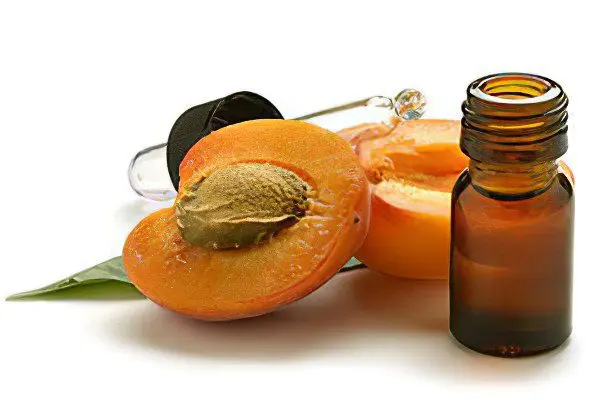
Apricot seed kernels are used to make the oil. It is possible to add seeds of cherry plum and plum. The output oil is very fatty and is used as a base oil. The composition contains a variety of acids: myristic, stearic and linoleic. Although it is liquid, it is able to stretch. The color of this oil is close to straw, the aroma is very subtle.
It is possible to use apricot oil, both alone and in combination with oils similar in composition. After adding such a product to cosmetics, it is enriched with vitamins: A, B, C. If this product is used for the skin, then it makes it soft, supple, moisturized.
In addition, the oil has an anti-inflammatory effect and can be used both for baby skin care and for the elderly. Often it can be found in the composition of anti-cellulite creams. In addition to all the positive effects, this oil evens out skin color.
Oil is used as part of medicines for the treatment of the heart, blood vessels, brain, and immunity disorders. It also serves as the basis for the manufacture of cosmetic products for lip and skin care.
Effects that can be obtained when using apricot oil:
Increased skin tone;
Alignment of skin color;
rejuvenation effect;
Moisturizing and softening the skin;
Deep cleansing like a chemical peel;
Elimination of peeling.
The components that make up apricot oil will make the contours of the face clearer, increase skin elasticity, stimulate the production of collagen and elastin.
The oil can be applied even to the thin skin of the eyelids, not to mention other parts of the body that need care. To enhance the effect of the product, it needs to be slightly warmed up. You can use the oil even for those people who have delicate and vulnerable skin, characterized by increased sensitivity.
Oil can be found in the composition of shampoos, balms, shower gels and other cosmetic products for hair, body and face care. However, you should not count on the fact that the oil will be part of inexpensive cosmetics. The price for it is quite high, so it can be present only in high-quality cosmetics.
Upon contact with oxygen, the oil rapidly oxidizes, so it is used as a base for drugs administered intravenously or intramuscularly.
To combat acne, the following composition will help: a drop of tea tree oil + a drop of lemon oil + a drop of lavender oil + apricot oil in the amount of two tablespoons.
Composition of anti-cellulite massage oil: 2 drops of essential oils (rosemary, lemon, orange, juniper) + two tablespoons of avocado oil + 2 tablespoons of apricot oil.
Means for strengthening the nail plates, for moisturizing the skin of the hands: apricot oil + jojoba oil + wheat germ oil. All components must be taken in the amount of a tablespoon, after preparation, the composition should be stored in the refrigerator in a closed glass container.
Moisturizing the skin: two tablespoons of almond oil and apricot oil + two drops of sandalwood, lavender, ylang-ylang oil. Apply the resulting product after cleansing the body.
Composition for the skin of the eyelids: Aevit vitamin capsule + rosehip oil + apricot oil + olive oil. Oils should be taken in the amount of one teaspoon. The product can be used daily at bedtime.
Cleansing and nourishing the dermis: vitamin E (10 drops) + apricot oil + castor oil. Oils should be taken in the amount of one tablespoon. The composition is suitable for dry skin care.
Elimination and prevention of shallow wrinkles: apricot oil + jojoba oil + avocado oil in the amount of a tablespoon. Add frankincense oil (3 drops) and rosewood oil (4 drops) there. Apply the product on the face in the morning and evening.
The oil can be used to care for the skin of women who are carrying a child and during breastfeeding.
Contraindications to the use and harm of apricot
The development of diarrhea can occur if, after eating fresh apricots, immediately drink water.
Do not eat apricots on an empty stomach, as well as after eating heavy meals.
You do not need to get too carried away with apricots in any form, if you have a diagnosis of diabetes mellitus or obesity.
Unripe apricots are heavy food. They can cause an increase in the acidity of gastric juice, cause heartburn and belching, so you should not eat them.
With bradycardia, you should abandon the use of apricots in any form.
Diseases of the gastrointestinal tract in the acute stage should be the basis for using apricots with caution.
How to choose and store an apricot?
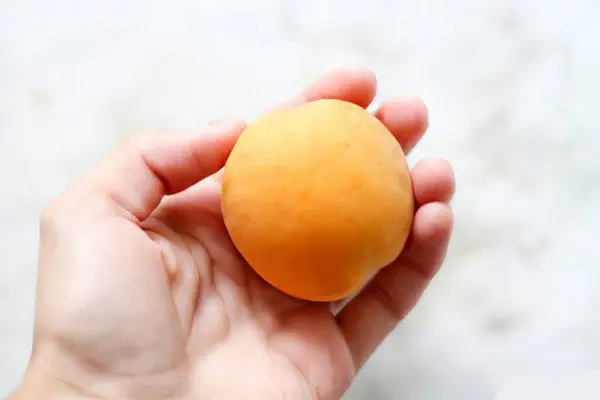
Green apricots with dented sides are unsuitable for food. The apricot should have a firm skin without blemishes. The pulp of the fruit is juicy, but not mushy, the stone is easily separated. If there are more than 10 points on an apricot, then this indicates its overripeness. Wormy apricots are not worth eating, but if such a fruit is caught in a purchase, then this is a good sign indicating the environmental safety of the entire batch of products.
If the fruit has a thin skin, and it is dry inside, then this indicates that it was picked unripe, and it ripened during transportation to its destination. Such apricots will not fully possess the full range of useful substances.
Apricots of the “pineapple” and “banana” varieties will have the maximum taste. They are easy to distinguish in appearance: the fruit is yellow, oblong in shape and large in size. If you plan to preserve apricots, then it is better to choose those that have a rich orange color. They are sweet in taste, but at the same time have some sourness. Small apricots, in turn, can even be bitter.
The shelf life of fruits without a refrigerator is 3 days, in the refrigerator – 20 days. To keep apricots longer, they need to be canned, frozen, or dried.
Apricot Salad Recipes
You can use apricots for baking and for making various desserts, but if a person follows the figure, then the following recipes will suit him:
Dried apricots (2 cups) + fresh carrots (3 pcs) + lemon pulp. Grind all the ingredients and season with sour cream in the amount of 100 g. To improve the taste, you can add sugar and parsley.
Fresh apricots (200 g) + fresh cabbage (100 g) + apples (100 g) + turnips 80 g) + carrots (80 g). Chop all the ingredients, mix and add sour cream with sugar as a dressing. Garnish with mint leaves and sprinkle with lemon juice.
Take a glass of dried apricots and the same amount of walnuts, mix and add honey there. Eat in small portions, as the calorie content of the salad is very high. At the same time, this dish will normalize the level of hemoglobin in the blood. Honey can be replaced with a mixture of cognac and powdered sugar.
A pound of fresh apricots, de-boned and cut into slices, place them in bowls and sprinkle with lemon juice. Separately, whip the cream with powdered sugar (2 tablespoons) and put on top of the apricots. Put the resulting low-calorie dessert in the refrigerator.
Place apricots in sugar syrup and boil for 10 minutes. To prepare the syrup, you need a glass of water and sugar (100 g). Then remove the seeds from the fruits and fill them with cottage cheese. Cottage cheese must first be ground with sugar and liquor. After stuffing, the dessert must be removed in the refrigerator to cool. Before serving, you can decorate the dish with whipped cream.
200 g of dried apricots is part of a festive salad with the following ingredients: chicken breast + boiled eggs (3 pcs) + 2 pickles + onion. Cut all the components and season with low-calorie mayonnaise.
Pears and apricots cut, pour honey, mix and let it brew. Mix again before serving.









